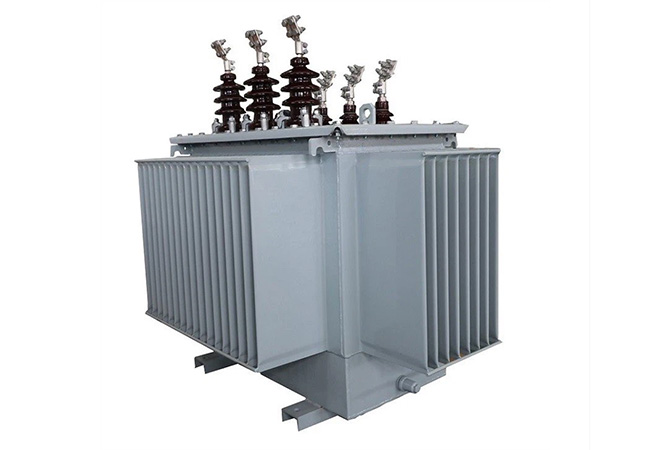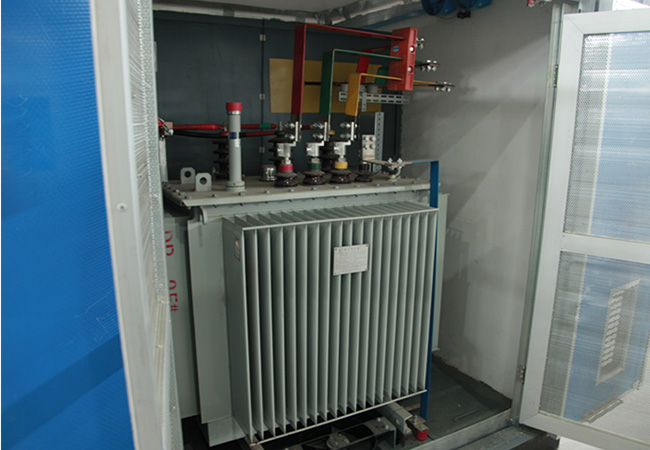What Are The Types Of Dry-Type Transformers? What Are The Principles Of Dry-Type Transformers?
08-19 2024 | By:
A dry-type transformer is an electrical device that uses the principle of electromagnetic induction to transfer electricity from one circuit to another. There are two types of windings in a dry-type transformer, namely the primary winding and the secondary winding. The primary winding refers to the winding connected to the AC power source, and the secondary winding refers to the winding connected to the load. The voltage in the circuit will increase or decrease, but the current rating will increase or decrease proportionally.
Working Principle of Dry-Type Transformer
The working of dry-type transformer depends on Faraday’s law of electromagnetic induction. According to Faraday’s law, “the rate of change of magnetic flux with time is proportional to the electromotive force induced in the conductor or coil.”
Faraday’s Law
E=N dɕ/dt
E=Induced electromotive force
N=Number of turns
dü=Change in flux
dt=Change in time
Types of dry-type transformers
Dry-type transformers can be classified based on voltage level, medium, purpose, configuration, and place of use. Now we will discuss each type in detail.
One: Based on voltage level
Based on voltage level, the types of dry-type transformers are as follows: step-up transformer; step-down transformer; isolation transformer.
Step-up transformer
Step-up transformer is a device that changes the low voltage on the primary side to high voltage on the secondary side. The primary winding of the coil has fewer turns than the secondary winding.
Equation:
Vp/Vs=Ns/Np
Advantages:
Transmit power over long distances at low cost.
Helps reduce line resistance.
Ability to work continuously.
Start operation immediately after installation without delay.
High efficiency and low losses.
Do not spend too much time and money on maintenance.
Limitations:
Limited to AC operation.
Use all-weather cooling system even if the system becomes bulky.
Step-down transformer
Step-down transformer is a device that changes the high voltage on the primary side to low voltage on the secondary side. The secondary winding of the coil has fewer turns than the primary winding.
Equation:
Vs/Vp=Ns/Np
Advantages:
Transmit power easily at low cost.
Highly reliable and efficient.
Offer different voltage requirements.
Limitations:
Requires a lot of maintenance, which can damage the transformer.
Raw material costs fluctuate.
Fault repair requires more time.
Isolation transformer
Isolation transformers can be step-up or step-down transformers, but the primary and secondary voltage values are always equal, that is, the turns ratio is always 1. This is obtained when the number of turns of the primary and secondary windings are the same. Isolation transformers are called “insulating transformers”.
Equation:
Vs/Vp=Ns/Np where Ns=Np
Advantages:
Provide electric shock protection for electronic components and personnel.
Suppress electrical noise.
Avoid ground loops.
Provide available power even if the equipment is damaged.
Used as instrument transformer
Handles any necessary voltage.
Limitations:
When operating as a pulse transformer, distortion is generated on the secondary side.
When operating DC pulse signals, the saturation of the magnetic core is reduced.
High cost.
Two: Based on the core medium
Based on the core medium, the dry transformer types are as follows: Air core transformer; Iron core transformer; Ferrite core transformer
Air core transformer
Air core transformers are designed for transmitting radio frequency currents, i.e. for use in radio transmitters and communication equipment, etc. As the name suggests, these dry transformers do not have a solid magnetic core and are therefore very lightweight, making them ideal for small portable electronic devices. Air core transformers use the windings and the air passing through them to generate magnetic flux. This helps the air core transformer completely eliminate the undesirable characteristics of ferromagnetic cores (eddy current losses, hysteresis, saturation, etc.)
Advantages:
Zero distortion.
Zero loss in signal quality.
Noiseless operation.
Low hysteresis and eddy current losses.
Lightweight.
Limitations:
Low coupling (mutual inductance)
Not suitable for power distribution.
Iron core transformer
In this type of dry transformer, the primary and secondary windings are marred by multiple iron plates. These iron plates provide a perfect connection path for the generated magnetic flux and provide similar functionality in the audio frequency range. Iron core transformers are widely used and highly efficient compared to air core transformers.
Advantages:
Handles large loads at low frequencies.
Provides less reluctance.
High efficiency.
Limitations:
Large eddy current losses
Ferrite core transformers
Ferrite core transformers are transformers whose cores are made of ferrite. Ferrite is a non-conductive ceramic compound with ferromagnetic properties. The high magnetic permeability of these dry-type transformers makes them ideal for a variety of high-frequency transformers, adjustable inductors, broadband transformers, common mode chokes, switching power supplies, and RF applications.
Advantages:
Low reluctance magnetic circuit.
High current resistivity.
Provides low eddy current losses at many frequencies.
High permeability, coercivity, and Q value.
Low hysteresis coefficient, DC sensitivity, and signal distortion.
Limitations:
Easy to saturate (its saturation flux density is typically <0.5t).
Permeability drifts with temperature.
Three: According to the usage
According to the usage, the transformer types are as follows: power transformer; distribution transformer
Power transformer
The main principle of the power transformer is to convert low-voltage input into high-voltage output. This transformer acts as a bridge between the generator and the primary distribution network. Due to the large power generation and complex construction, it is mainly installed in power stations and transmission substations. High-voltage transmission networks use power transformers.
Advantages:
Suitable for high-voltage applications (greater than 33KV).
High insulation level.
Minimize power loss.
High cost performance.
Limitations:
The transmission station is under load for 24 hours, so the loss of iron core and copper will last all day.
Distribution transformer
Distribution transformers are step-down transformers used in industrial and civil distribution networks. These transformers convert high grid voltage into the voltage required by the end user, at which the electrical energy is distributed and utilized at the user end. In order to distribute electricity from power plants to remote areas, these transformers are used.
Advantages:
Small size.
Simple installation.
Low magnetic loss.
It is not always fully loaded.
Limitations:
Designed efficiency is 50-70%.
Low flux density compared to power transformers.
Periodic load fluctuations.
Time dependent.
Four: Based on power supply
Based on configuration, transformer types are as follows: Single-phase dry type transformer; Three-phase dry type transformer
Single-phase dry type transformer
When there is only one coil on the primary side and only one coil on the secondary side, it is called a single-phase transformer. Here the power is provided through one conductor. This type of transformer accepts single-phase AC power and outputs single-phase AC power, usually at different voltage levels operating in a uniform time phase. This type of transformer is mainly used in household appliances.
Advantages:
Simple network.
High cost performance.
Most efficient AC power supply with power up to 1000 watts.
Limitations:
Only provides 1 ph load.
Used for light loads and small motors.
Minimum power transfer capability.
Occurrence of power failure.
Three-phase dry type transformer
A three-phase transformer is one where the power flows through three conductors. A three-phase transformer contains six coils, three on the primary side and three on the secondary side. This type of transformer accepts three-phase AC and outputs three-phase AC, usually at different voltage levels operating in a uniform time phase. These types of transformers are mainly used as power or distribution transformers
Advantages:
Large motors or heavy-duty materials.
Transmits energy to long distances through magnetic fields.
Maximum power transmission capability.
No power failures.
Limitations:
Many cooling systems are required depending on the dry type transformer rated power.
Complex network.
Five: According to the place of use
According to the place of use, the dry type transformer types are as follows: Indoor transformer; Outdoor transformer
Indoor transformer
Indoor transformers are usually dry type transformers. These transformers use air as a cooling medium and usually their primary and secondary connections are isolated. Dry type transformers are installed in and near buildings as they are environmentally safer, i.e., non-flammable. This type of transformer is considered ideal for shopping malls, hospitals, residential areas, and other commercial areas.
Advantages:
Low maintenance cost.
A safer choice than oil-filled transformers.
Limitations:
Higher operating losses.
Noise pollution.
Very expensive.
Outdoor Transformers
Outdoor transformers are usually oil-filled transformers. These transformers use oil as the cooling medium and are designed for use in outdoor environments where environmental conditions must be protected due to the chances of oil spills and leaks, creating a risk of fire.
Advantages:
Smaller and more efficient.
Reduced operating costs.
Limitations:
High maintenance costs.
Requires regular sampling.
You may also find these interesting:


